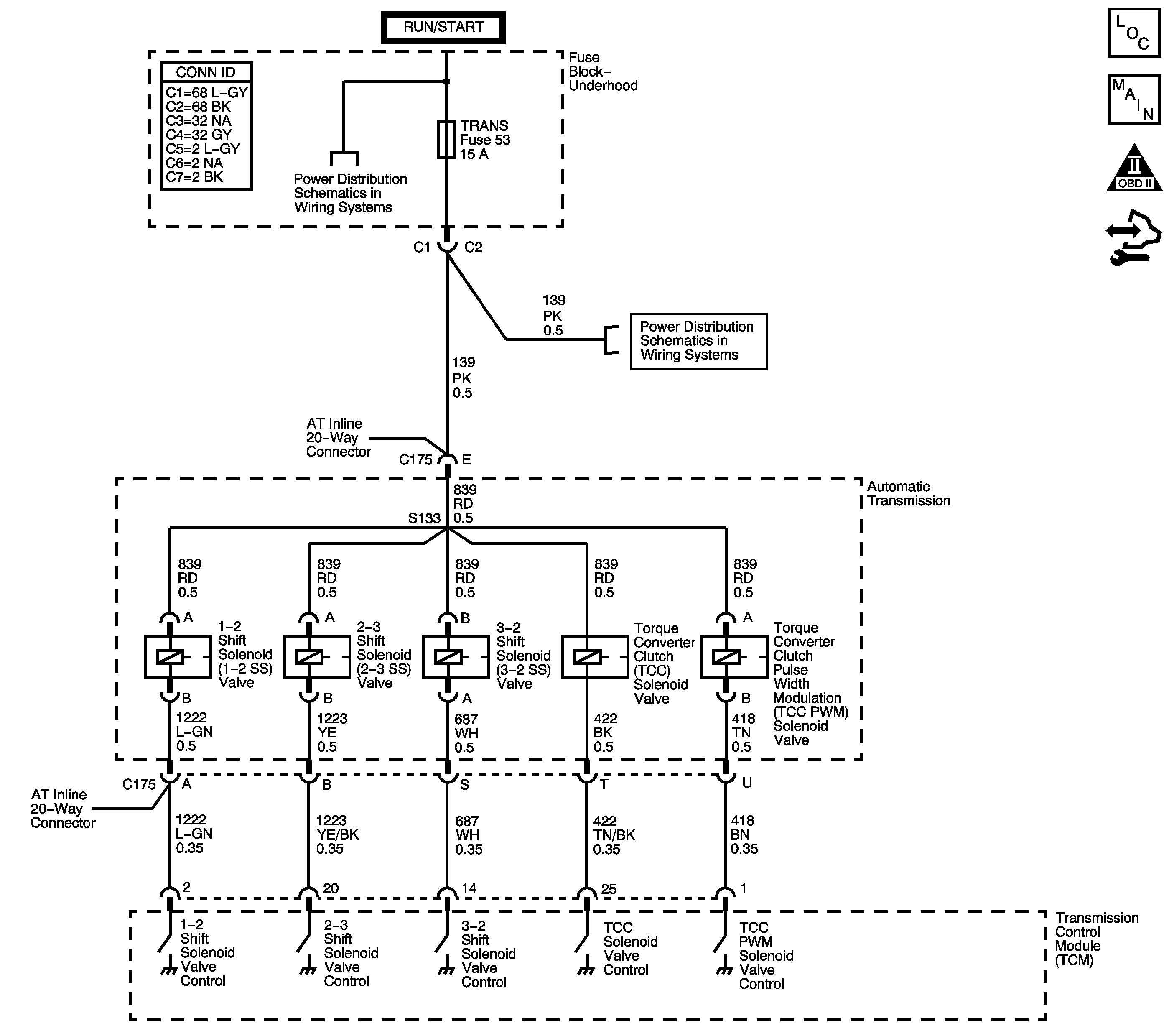DTC P2770 5.3L

Circuit Description
The torque converter clutch (TCC) solenoid valve is an electrical device that is used with the torque converter clutch pulse width modulation (TCC PWM) solenoid valve in order to control TCC apply and release. The TCC solenoid valve attaches to the transmission case assembly extending into the pump cover. The TCC solenoid valve receives voltage through the ignition voltage circuit. The transmission control module (TCM) controls the solenoid by providing the ground path on the TCC solenoid valve control circuit. The TCM monitors the throttle position (TP) voltage, the vehicle speed and other inputs in order to determine when to energize the TCC solenoid valve.
When the TCM detects a continuous short to voltage in the TCC solenoid valve control circuit, then DTC P2770 sets. DTC P2770 is a type B DTC.
DTC Descriptor
This diagnostic procedure supports the following DTC:
DTC P2770 Torque Converter Clutch (TCC) Enable Solenoid Control Circuit High Voltage
Conditions for Running the DTC
| • | The system voltage is 8-18 volts. |
| • | The engine speed is 475 RPM for 5 seconds. |
Conditions for Setting the DTC
DTC P2770 sets if the TCM commands the solenoid ON and the voltage feedback remains high, B+.
Action Taken When the DTC Sets
| • | The TCM requests the ECM to illuminate the malfunction indicator lamp (MIL) during the second consecutive trip in which the Conditions for Setting the DTC are met. |
| • | The TCM inhibits TCC engagement. |
| • | The TCM inhibits 4th gear if in hot mode. |
| • | The TCM freezes transmission adaptive functions. |
| • | At the time of the first failure, the TCM records the operating conditions when the Conditions for Setting the DTC are met. The TCM stores this information as a Failure Record. |
| • | At the time of the second failure, the ECM records the operating conditions when the Conditions for Setting the DTC are met. The ECM stores this information as a Freeze Frame. |
| • | The TCM stores DTC P2770 in TCM history during the second consecutive trip in which the Conditions for Setting the DTC are met. |
Conditions for Clearing the DTC
| • | The ECM turns OFF the MIL after the 4th consecutive drive trip in which the TCM does not send a MIL illumination request. |
| • | A scan tool can clear the DTC. |
| • | The TCM clears the DTC from TCM history if the vehicle completes 40 warm-up cycles without a non-emission related diagnostic fault occurring. |
| • | The TCM cancels the DTC default actions when the ignition is OFF long enough in order to power down the TCM. |
Step | Action | Yes | No |
|---|---|---|---|
1 | Did you perform the Diagnostic System Check - Vehicle? | Go to Step 2 | |
2 |
Important: Before clearing the DTC, use the scan tool in order to record the Freeze Frame and Failure Records. Using the Clear Info function erases the Freeze Frame and Failure Records from the transmission control module (TCM). Does the TCC Enable Sol. CKT status parameter display OK? | Go to Testing for Intermittent Conditions and Poor Connections | Go to Step 3 |
3 |
Refer to Automatic Transmission Inline 20-Way Connector End View . Does the test lamp illuminate? | Go to Step 4 | Go to Step 5 |
4 | Test the control circuit of the TCC solenoid valve for a short to voltage between the TCM and the AT inline 20-way connector. Refer to Circuit Testing and Wiring Repairs . Did you find and correct the condition? | Go to Step 7 | Go to Step 6 |
5 | Replace the AT internal wiring harness. The TCC solenoid valve is part of the AT internal wiring harness. Did you complete the replacement? | Go to Step 7 | -- |
6 | Replace the TCM. Refer to Control Module References for replacement, setup, and programming. Did you complete the replacement? | Go to Step 7 | -- |
7 | Perform the following procedure in order to verify the repair:
Has the test run and passed? | Go to Step 8 | Go to Step 2 |
8 | With the scan tool, observe the stored information, capture info, and DTC Info. Does the scan tool display any DTCs that you have not diagnosed? | System OK |
